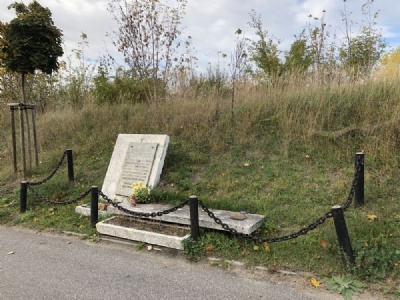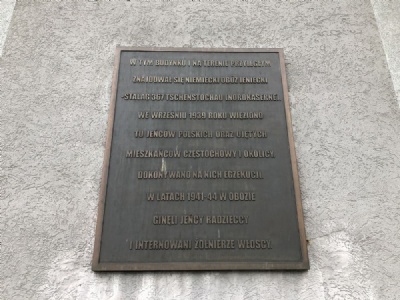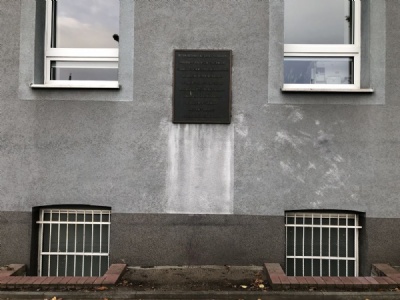Czestochowa – Stalag 367
In autumn 1941 the Germans established a prisoner of war camp in Czestochowa called Stalag 367. It was divided in two parts, a smaller part was established in former Polish military barracks (Nordkaserne). And a larger part in Czestochowa’s eastern outskirts where primitive wooden barracks were built on a previously undeveloped area. The first Soviet prisoners of war arrived in September 1941. They were used as slave workers at HASAG ammunition production factory in Czestochowa. The lack of food and medicines meant a high mortality rate among prisoners. Add to that regular executions. The prisoners who died were buried in mass graves. The camp was primarily intended for the privates and non-commissioned officers, but officers from the Red Army were also imprisoned. From autumn 1943, Italian prisoners of war were sent to the camp as a result of Italy’s capitulation same month. In 1944, as the Soviet Red Army advanced westward and approached Czestochowa, the Germans began evacuating prisoners to camps westward. The camp was liberated by the Red Army January 17, 1945. Between 1941 and 1945, about 65,000 Soviet prisoners of war had been prisoner in the camp, about 17,000 died.
Current status: Demolished with monument (2023).
Location: 50°48' 53.29" N 19°09' 05.95" E
Get there: Car.
Follow up in books: Bob, Fedorowich, Kent: Prisoners of War and Their Captors in World War II (1996).





After the war, the larger camp was demolished and there is nothing left but a memorial and a faded information board. Nordkaserne, on the other hand, remains as in 2023 belongs to Czestochowa’s technical university and there is a memorial plaque on the facade. The current tablet was set up in 2016 because the previous one, set up in 1950 during communist times, paid tribute to Polish-Soviet relations was as much as it was a tribute to those who sat in the camp.